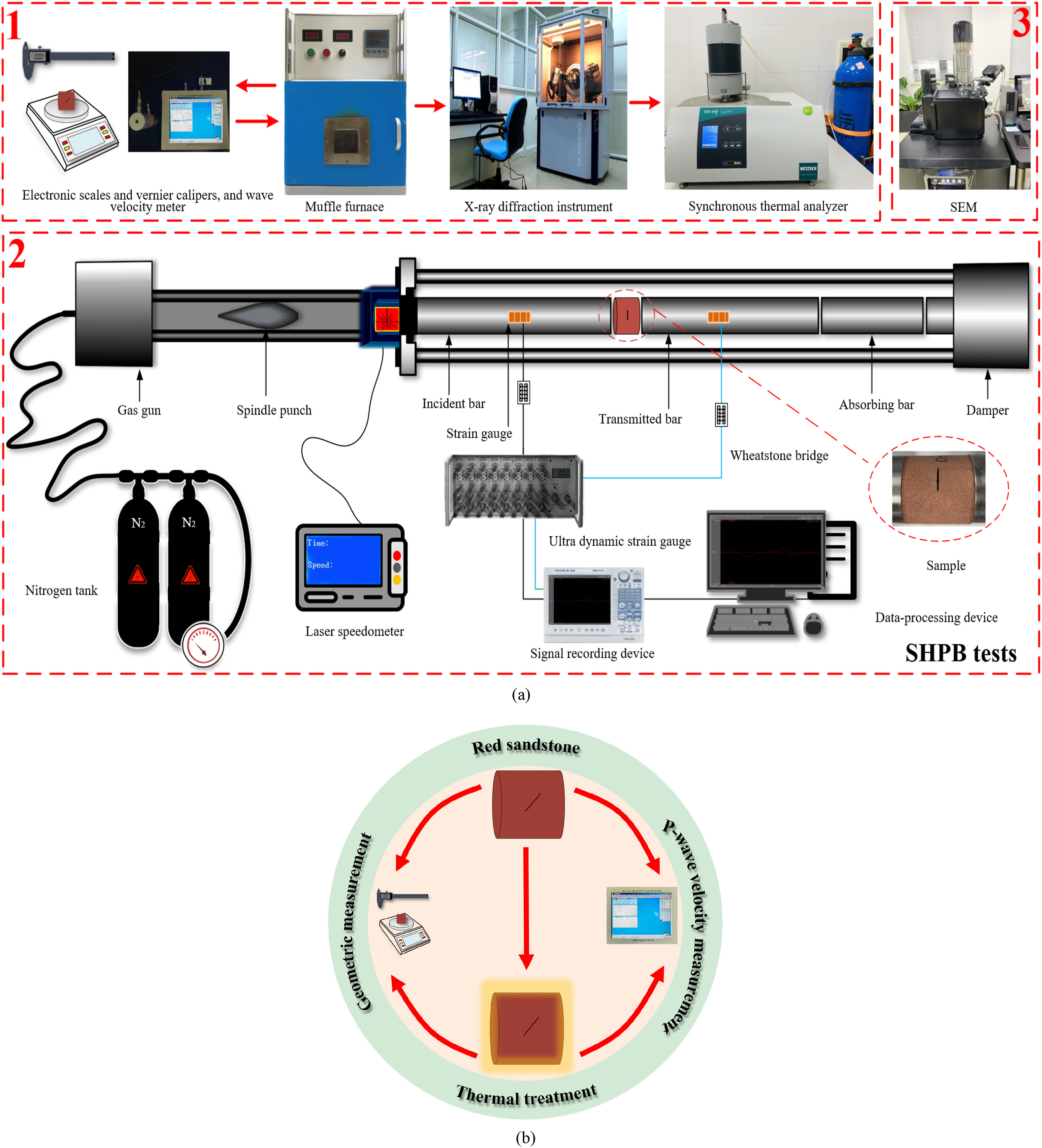JRMGE / Vol 16 / Issue 2
Performances of fissured red sandstone after thermal treatment with constant-amplitude and low-cycle impacts
Yongjun Chen, Tubing Yin, P.G. Ranjith, Xibing Li, Qiang Li, Dengdeng Zhuang
Show More
a School of Resources and Safety Engineering, Central South University, Changsha, 410083, China
b Department of Civil Engineering, Monash University, Melbourne, 3800, Australia
c Oulu Mining School, University of Oulu, Oulu, FI-90014, Finland
2024, 16(2): 561-587. doi:10.1016/j.jrmge.2023.04.023
Received: 2022-12-14 / Revised: 2023-04-14 / Accepted: 2023-04-26 / Available online: 2023-08-19
2024, 16(2): 561-587.
doi:10.1016/j.jrmge.2023.04.023
Received: 2022-12-14
Revised: 2023-04-14
Accepted: 2023-04-26
Available online: 2023-08-19
In the engineering practices, it is increasingly common to encounter fractured rocks perturbed by temperatures and frequent dynamic loads. In this paper, the dynamic behaviors and fracture characteristics of red sandstone considering temperatures (25 °C, 200 °C, 400 °C, 600 °C, and 800 °C) and fissure angles (0°, 30°, 60°, and 90°) were evaluated under constant-amplitude and low-cycle (CALC) impacts actuated by a modified split Hopkinson pressure bar (SHPB) system. Subsequently, fracture morphology and second-order statistics within the grey-level co-occurrence matrix (GLCM) were examined using scanning electron microscopy (SEM). Meanwhile, the deep analysis and discussion of the mechanical response were conducted through the synchronous thermal analyzer (STA) test, numerical simulations, one-dimensional stress wave theory, and material structure. The multiple regression models between response variables and interactive effects of independent variables were established using the response surface method (RSM). The results demonstrate the fatigue strength and life diminish as temperatures rise and increase with increasing fissure angles, while the strain rate exhibits an inverse behavior. Furthermore, the peak stress intensification and strain rate softening observed during CALC impact exhibit greater prominence at increased fissure angles. The failure is dominated by tensile damage with concise evolution paths and intergranular cracks as well as the compressor-crushed zone which may affect the failure mode after 400 °C. The second-order statistics of GLCM in SEM images exhibit a considerable dependence on the temperatures. Also, thermal damage dominated by thermal properties controls the material structure and wave impedance and eventually affects the incident wave intensity. The tensile wave reflected from the fissure surface is the inherent mechanism responsible for the angle effect exhibited by the fatigue strength and life. Ultimately, the peak stress intensification and strain rate softening during impact are determined by both the material structure and compaction governed by thermal damage and tensile wave.
Keywords: Red sandstone, Temperature, Fissure, Constant-amplitude and low-cycle (CALC) impact, Fatigue failure, Response surface method (RSM)
Article Data
Author(s) Information
Yongjun Chen

Yongjun Chen commenced his doctoral studies in Geotechnical Engineering at Central South University in 2020. Since 2022, he has been the recipient of a public scholarship from the China Scholarship Council, allowing him to pursue joint PhD training at the 3GDeep Laboratory at Monash University in Australia. His research pursuits are multifaceted and include: exploring the dynamic load response mechanisms of deep complex rock masses subjected to both steady-state and non-steady-state thermal stress coupling; investigating the thermo-hydro-mechanical (T-H-M) coupling behavior of deep thermal disturbance rock masses, which include host rocks for the deep geological disposal of nuclear waste and unconventional deep underground thermal storage rocks; and probing the microseismic induction mechanisms and stability of Enhanced Geothermal System (EGS) fractured rock masses.

